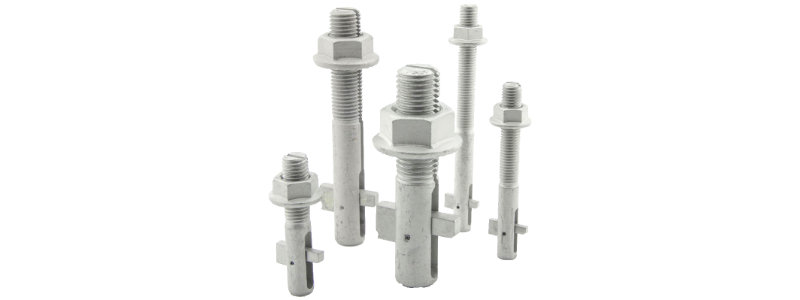Fasteners Used Within the Civil Engineering Sector
Blind Bolt US | 5th July 2021

US Construction Industry
Work within the civil engineering sector involves the use of a range of different fasteners, all of which are used to fasten two or more objects to each other. This article will examine exactly what a fastener is, as well as outlining some of the different types of fastener currently available.
What Constitutes A Fastener?
In simple terms a fastener is a device which performs the role of fixing two or more objects together in a non-permanent or permanent manner. The non-permanent options include those which utilize a thread to join together, such as bolts and screws. The permanent joining solutions are those such as nails and rivets. The non-permanent fasteners described above can be taken apart and removed when they have to be, without any damage being caused to any other components used to join the objects in question.
The types of fastener employed in civil engineering projects tend to be made from the following materials:
- Stainless steel
- Carbon steel
- Alloy steel
- Bronze
- Brass
The choice of fastener used will vary from project to project, but no matter which is used they are meant to serve the same vital service, i.e. forming a safe and strong connection.
The different types of fastener used within construction include the following:
- Anchors
- Studs
- Nuts
- Bolts
- Screws
- Washers
What Type of Fastener Is Best For Your Requirements?
The choice of fastener you need to make for construction work will be based on the nature of the project in question. Options such as bolts, washers and anchors will be employed in different ways depending upon the circumstances of a project and the finishing which is required. The factors which need to be considered when deciding which type of fastener to use for a specific project include the following:
- The materials which need to be joined together
- How much those specific materials weigh
- The environment in which the finished join will have to operate. This might involve making allowances for factors such as extreme temperatures and corrosive materials.
- The degree to which the fasteners can be reused
- How accessible the objects which need to be joined will be
Some other factors might also impact on the choice of fasteners to be used, such as the availability of equipment, the work-force delivering the project and wider design concerns.
The fact that each type of fastener serves a distinct purpose means that any project manager needs to look into the choices available before making a final choice for every aspect of the overall project. For some projects, different types of fasteners will need to be used alongside each other, an example being the fact that bolts, washers, nuts and screws are often used in conjunction when joining objects together.
The materials used for some fasteners are more durable than for others. Stainless steel, for example, is resistant to heat and corrosion, and so is the perfect material for fasteners used in a range of different environments. Aluminum fasteners, on the other hand, offer a superb weight to strength ratio, which means they are often the preferred choice over other options.
As this summary makes clear, there are numerous factors which need to be considered when choosing the fasteners for a particular job. In depth research will enable you to learn what needs to understood about each type of fastener, and the advantages of blind bolts should also be considered when a project is being planned.
An Introduction to the Blind Bolt
The blind bolt is a structural fastener which combines versatility and strength with ease of use. It consists of a steel pin, a sleeve and a collar and, as well as being easy to install it offer the kind of durable, high-strength connection that many construction projects rely upon.
Although it wasn’t the first blind fastener available the blind bolt is now used across the construction industry thanks to the range of innovations it has introduced. As well as being highly effective it is versatile enough to be used for a range of purposes.
Blind bolts offer more strength than hex bolts, rivets and welds, and can be used for the projects which more conventional fasteners can’t deal with. Blind bolts can be provided in a range of sizes and designs, and the differences need to be factored in when putting any specific engineering project together.
When Are Blind Bolts Used?
Blind bolts were developed in order to deliver strong and durable connections in spots which offer limited accessibility, and when maximum possible strength is important. Industries such as auto manufacturing, airplane construction, bridge building and shipbuilding utilize blind bolts, as can any application which calls for a high strength, durable bond.
Take a look at these civil engineering solutions to learn more about what blind bolts can offer to you. As the article outlines, they provide a versatile solution which combines efficiency with affordability across a range of manufacturing situations.
What to Take Away
Civil engineering as a whole relies on the availability of a range of fasteners, and blind bolts, which we sell, are an important part of that range. Before deciding which fastener is best suited to your project, think carefully about the nature of the work itself and look into the range of fasteners available in depth
Interested in finding out more about our blind bolts and whether they’d work for you? Check out our guide here. You can also find out more about our blind bolts by contacting the BlindBolt team via our quick and easy contact form below. Alternatively, you can get in touch with a member of our team today on (630)882-9010 or send us an email at enquiries@blindbolt.com. We look forward to hearing from you.